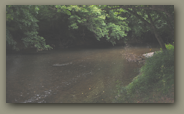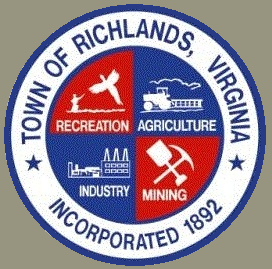
Clinich River Walking Trail Report
Mission Statement
Richlands, a small town in the mountains of southwest Virginia,
is located near the origins of the Clinch River, a 135 mile river
which flows through the Great Appalachian Valley before joining
the Tennessee River. The Clinch, along with the Powell River,
is considered one of the only ecologically intact (undammed)
headwaters of the Tennessee River system and is the home of
a number of rare and endangered species.
Originally established as a planned community whose economy
would be supported by mining of rich coal deposits, Richlands
was intended to be the Pittsburgh (PA) of the South by the
Clinch Valley Coal and Iron Company of Philadelphia. The
coming of the Norfolk & Western Railroad supported the capital
investment to create a town that would manufacture products
such as steel, brick, and glass. It also showcased the deluxe
Hotel Richlands and other businesses as well as residential
areas. Because the Town was uniquely situated along the
Clinch River, the plan encompassed development and growth
along both sides of the river. One particular stretch of railway,
which paralleled the Clinch River, was used for transporting raw
materials for brick manufacturing. It was this piece of original
railroad track bed that paved a way to the future. In 2000, the
Town of Richlands received a Transportation Enhancement
grant from the Virginia Department of Transportation to create a
walking trail along the old railroad track in order to connect the
Williams Field/Critterville Playground to downtown Richlands.
The trail’s official name is the Clinch River Pedestrian Walkway.
A portion of the trail was built, but plans to connect the trail to
downtown Richlands were not completed.
The Community Design Assistance Center was tasked with developing a conceptual design
for a greenway that extends the exsisting walking trail approximately 1.67 miles to
complete the connection to downtown and a historic swinging bridge. The goal would be
to provide increased benefits and equal access to the river for the larger community.







